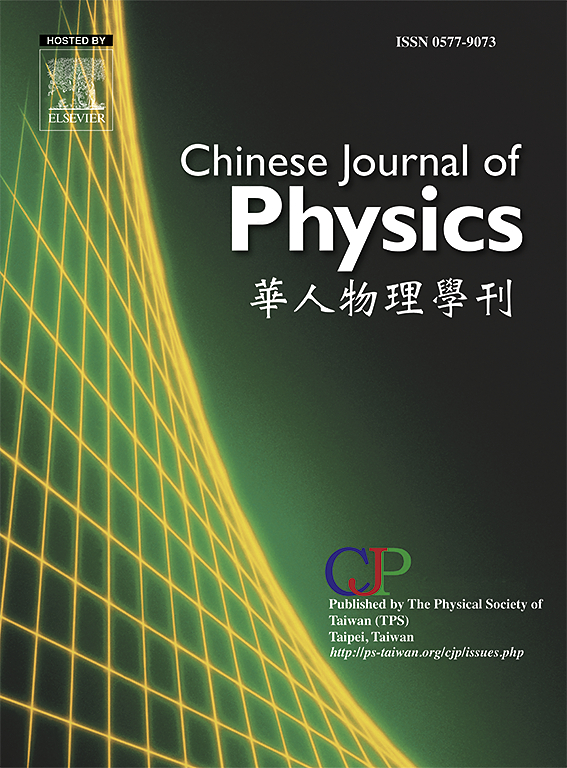Generalized Hawking radiation power corresponding to Sharma–Mittal entropy
IF 4.6
2区 物理与天体物理
Q1 PHYSICS, MULTIDISCIPLINARY
引用次数: 0
Abstract
The effective radius of the black hole radiation as , determines the area in space–time around the black hole with radius , which is the source of the black hole’s Hawking radiation. Also here, it should be noted that, the effective radius as a geometric bound of a specific area around the black hole plays an important role in understanding the thermodynamics of the black hole. The general belief based on Hawking’s opinion was that but Giddings concluded that . On the other hand, many researches have shown that the generalized entropies for the describing gravitational phenomena more appropriate than the Boltzmann–Gibbs entropy. Among the generalized entropies, we can mention Tsallis, Renyi and Sharma–Mittal entropies. Generally one can say that the Sharma–Mittal entropy can be converted into Tsallis and Renyi entropies under certain conditions. Therefore, the question that arises here is that, by changing surface entropy of black hole to Sharma–Mittal entropy, how will be compatible the effective radius of the black hole with Hawking’s and Gidding’s point of view ? Or how is changed the effective radius by changing the surface entropy of black hole? Our main motivation for presenting this paper is that we have to give answer the above mentioned question.
求助全文
约1分钟内获得全文
求助全文
来源期刊

Chinese Journal of Physics
物理-物理:综合
CiteScore
8.50
自引率
10.00%
发文量
361
审稿时长
44 days
期刊介绍:
The Chinese Journal of Physics publishes important advances in various branches in physics, including statistical and biophysical physics, condensed matter physics, atomic/molecular physics, optics, particle physics and nuclear physics.
The editors welcome manuscripts on:
-General Physics: Statistical and Quantum Mechanics, etc.-
Gravitation and Astrophysics-
Elementary Particles and Fields-
Nuclear Physics-
Atomic, Molecular, and Optical Physics-
Quantum Information and Quantum Computation-
Fluid Dynamics, Nonlinear Dynamics, Chaos, and Complex Networks-
Plasma and Beam Physics-
Condensed Matter: Structure, etc.-
Condensed Matter: Electronic Properties, etc.-
Polymer, Soft Matter, Biological, and Interdisciplinary Physics.
CJP publishes regular research papers, feature articles and review papers.
 求助内容:
求助内容: 应助结果提醒方式:
应助结果提醒方式:


